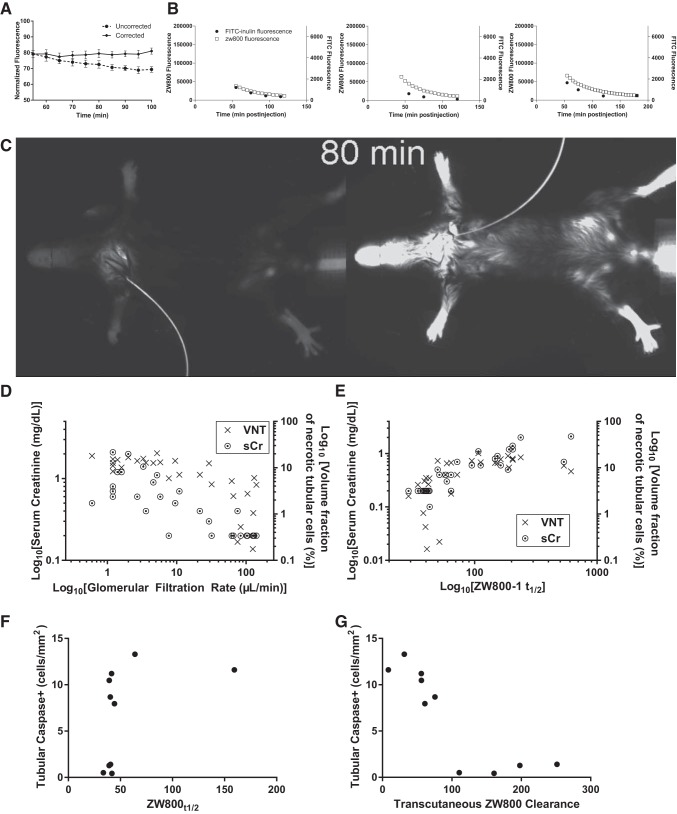Fig. 4.
ZW800-1 fluorescence after bolus injection in nephrectomized (A), and cardiac arrest/cardiopulmonary resuscitation (CA/CPR)- or sham-treated mice (B–G). A: ZW800-1 fluorescence after bolus injection in four surgically naïve mice. The reduction in uncorrected fluorescence over time (~10% of baseline fluorescence) is eliminated by application of correction for serum-mediated decay of ZW800-1 fluorescence. Error bars are standard deviation. B: transcutaneous ZW800-1 fluorescence (□) and FITC-inulin serum fluorescence in three individual animals demonstrating close apposition of time-signal curves. C: 800 nm in vivo fluorescence image of sham (left) and CA/CPR-treated mouse. This still image from Supplemental Video S3 was taken 80 min after bolus injection of ZW800-1. Intact renal clearance of ZW800-1 is demonstrated in the sham by lack of transcutaneous fluorescence, in contrast to the CA/CPR-treated mouse (right), which exhibits bright fluorescence due to lack of clearance of the bolus. D: glomerular filtration rate (GFR) 24 h after sham or CA/CPR closely correlates with serum creatinine (left axis) and unbiased stereology-quantified tubular cell death. E: relationship in D is recapitulated between ZW800-1 fluorescence half-time ZW800-1t1/2 and serum creatinine (r = 0.89, P < 0.0001) and tubular cell death (r = 0.74, P < 0.0001). In D and E, data are log-transformed to demonstrate correlation as shown; analysis in text is of untransformed primary data. F and G: Caspase-positive cells/mm2 in histologic section from 10 mice subjected to sham or CA/CPR, 10 h after respective procedures. The half time for ZW800-1 fluorescence (ZW800-1t1/2) did not correlate well with tubular caspase signal (F); however, ZW800-1 clearance (G) correlates strongly with tubular caspase, r = −0.87, P = 0.0022.

